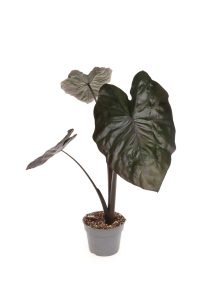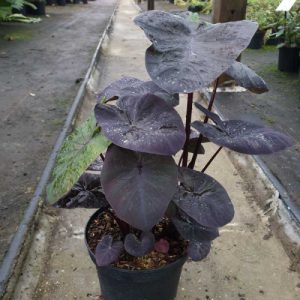- English
- Chinese
- French
- German
- Portuguese
- Spanish
- Russian
- Japanese
- Korean
- Arabic
- Irish
- Greek
- Turkish
- Italian
- Danish
- Romanian
- Indonesian
- Czech
- Afrikaans
- Swedish
- Polish
- Basque
- Catalan
- Esperanto
- Hindi
- Lao
- Albanian
- Amharic
- Armenian
- Azerbaijani
- Belarusian
- Bengali
- Bosnian
- Bulgarian
- Cebuano
- Chichewa
- Corsican
- Croatian
- Dutch
- Estonian
- Filipino
- Finnish
- Frisian
- Galician
- Georgian
- Gujarati
- Haitian
- Hausa
- Hawaiian
- Hebrew
- Hmong
- Hungarian
- Icelandic
- Javanese
- Kannada
- Kazakh
- Khmer
- Kurdish
- Kyrgyz
- Latin
- Latvian
- Lithuanian
- Luxembou..
- Macedonian
- Malagasy
- Malay
- Malayalam
- Maltese
- Maori
- Marathi
- Mongolian
- Burmese
- Nepali
- Norwegian
- Pashto
- Persian
- Punjabi
- Serbian
- Sesotho
- Sinhala
- Slovak
- Slovenian
- Somali
- Samoan
- Scots Gaelic
- Shona
- Sindhi
- Sundanese
- Swahili
- Tajik
- Tamil
- Telugu
- Thai
- Ukrainian
- Urdu
- Uzbek
- Vietnamese
- Welsh
- Xhosa
- Yiddish
- Yoruba
- Zulu
- Kinyarwanda
- Tatar
- Oriya
- Turkmen
- Uyghur

Osisi Colocasia Aghọwo ihe ewu ewu n'ihi ụdị mpempe akwụkwọ ha pụrụ iche ma meghe onwe ha ugbu a, a na-ejikwa ya ugbu a n'ụlọ yana na ubi. Banyere ịkụ ihe ọkụkụ nke osisi dakọtara, otu nwere ike lekọta ngwakọta ọ bụghị naanị dị mma ma na-enyere uto na ahụike nke osisi.

Osisi Colocasia
Atụmatụ ụdị ụdị colocasia
Na-abụkarị nnukwu, obi dị iche iche ma ọ bụ oval n'ụdị, osisi colocasia nwere ụdị dị iche iche nke agba site na akwụkwọ ndụ akwụkwọ ndụ na-acha odo odo na akwụkwọ ha. Osisi ndị a na-eme mgbanwe na-aga n'ihu na ọnọdụ iru mmiri, na-ahụkarị ụlọ ha na mpaghara ndo, ma nwee nnukwu ogo mgbanwe. Ya mere, ọbụlagodi mgbe ị na-ahọrọ osisi ndị kwekọrọ na ibe ha, mmadụ kwesịrị ịtụle akụkụ dị ka ọkụ, iru mmiri, na ala iji mepụta ebe dị mma na-eto eto.
Echiche nke kwekọrọ
E nwere ọtụtụ ụkpụrụ nduzi dị mkpa a ga-agbaso mgbe ị na-ahọrọ osisi ndị dabara na osisi colocasia. Nke mbu, mmadu gha atulelee ihe di nkpa. Iji hụ na ha nwere ike itolite n'otu ebe ahụ, mmadụ kwesịrị ịhọrọ osisi nwere ọkụ chọrọ yiri nke osisi colocasia. Otu ga-enwerịrị mmiri mmiri mgbe niile. Osisi Colocasia n'ozuzu n'ozuzu n'ozuzu na-achasi ike na ọnọdụ iru mmiri, n'ihi ya, ọ dị oke mkpa na osisi jikọtara ọnụ nwere mmiri dị ka ibe ya iji zere mmiri mmiri. Ọzọkwa dị ka ihe dị mkpa dị mma nke ọnọdụ ala. Ọ bụ ezie na osisi Colocasia nwere ike ịba ụba na ahịhịa dị iche iche ma nwee igbapu mmiri, ọ bụ ihe amamihe dị na ya ịhọrọ osisi ndị na-eme nke ọma.
Ụdị osisi kwesịrị ekwesị
Colocasia plants flourish in the company of ferns. They are most at ease in moist, dark environments; so, the usage of colocasia plants may help you design a landscape that is both peaceful and shady. Two very good choices are Ivy and bird’s nest ferns. These plants’ leaf morphologies are similar to those of colocasia plants, which might help to enhance the appearance generally. Two more varieties of foliage plants said to be well suited for colocasia plants are dieffenbachia and heart-leaf vines. These plants have similar development habits, and they flourish in somewhat shaded conditions. They might complement each other as well as add levels and vividness.
Banyere anya, ị ga-ahọrọ ụfọdụ osisi okooko osisi ndị nwere ike itinye ya n'akụkụ osisi colocasia. Osisi ndị dị otú ahụ gụnyere Begonias na Dahlias n'etiti ndị ọzọ. Ihe dị iche na-agbagha n'etiti blooms nke ahịhịa ndị a na akwụkwọ nke osisi colocasia na-agbakwụnye na mmetụta nke nhazi na enyemaka iji mepụta oke agba. Banyere ifuru osisi, ha chọrọ ntakịrị ọkụ karịa. N'aka nke ọzọ, ọ bụrụ na mmadụ ahọrọ ụdị ndo, ha nwekwara ike ịdị na-agbakọ ọkụ na osisi colocasia iji mepụta ụdị vibrasia.
Many herbs, like mint and cilantro, are also fit for usage in combination with taro plants. These plants not only have an appearance that complements taro plants, but their scent might enhance the complete environment of the nearby surroundings. Many herbs also have shallow roots, hence they won’t fight taro plants for nutrients in the ground. Plants of both kinds may so dwell amicably while they are developing.
Although succulents are usually sun-loving plants, if the conditions are right one may grow them next to taro plants. It’s a great idea to choose some shade-tolerant succulents whose unique shapes and textures would accentuate the whole mix and create a variety of visual effects, including fire festival and tiger thorn berry.
Ntụziaka maka ọrụ ugbo na-agakọ
Karịsịa na abụọ, ọ dị oke mkpa ị toa ntị na ikuku ikuku wee hụ na oghere dị n'etiti osisi maka mgbasa ikuku iji gbochie mgbasa nke ọrịa na ụmụ ahụhụ. Ihe ọkụkụ nke taro na osisi ndị metụtara ha na-enyere aka chekwaa ezi udi na ọnọdụ uto. Nke a na - emekwa ka ìhè maka osisi.
Another rather important thing to accomplish is monitoring the condition of the plants’ health. After paired culture is over, regular inspections of the developing status of the plants and quick changes to the management strategies are crucial to ensure the plants’ welfare. It is advisable to avoid choosing plants with overdeveloped root systems in order to stop influencing the growth of taro crops. This may effectively restrict plant competition and provide an environment fit for normal growth.
Ihe atụ dabara adaba
Tinye osisi taro na ọchịchịrị ebe nwere ọtụtụ ferns ndị ọzọ, gụnyere akụrụ na mma agha. Ha dabere na ibe ha na gburugburu iru mmiri ma nwee ike imepụta micro-chọọ mma dị ebe ahụ. Ngwakọta a akọwapụtara na-arụpụta ọ bụghị naanị ifuru osisi bara ụba kamakwa oke echiche nke hierarchy.
N'ebe ahụ enwere ikuku anwụ zuru oke, begonias na-aga nke ọma na osisi taro. Wayzọ a na-a begonias iche iche iche na nke osisi cro osisi, nke na-enyere aka ịmepụta ndị isi na gburugburu. Ngwakọta a ọ bụghị naanị na-eme ka ebe ahụ na-ele anya dị mma kamakwa na-adọta uche nke onye ọ bụla na-agafe ya.
Na-akụ ahịhịa dị ka Mint na coriander ọzọ na osisi taro na mbara ihu ahụ nwere ike inyere gị aka itolite ha. Ngwakọta a nwere ikike iji kọọ ìhè anyanwụ na mmiri; Isi nke Mint nwere ikike ịdọrọ anwụnta, mee ka gburugburu ebe obibi dị ndụ karịa, ma nyere aka mepụta ikuku dị mma na ndụ kwa ụbọchị.

Royal Hawaiian Aloha Many
Osisi taro bụ nhọrọ a ma ama maka ụlọ obibi ma n'èzí n'ihi na uru ha bara. Ahọrọ ngwakọta zuru oke nke osisi na-enweghị ike ịkwalite ogo nke mpaghara ahụ kamakwa enyere osisi aka ito eto n'ụzọ dị mma. Buru ụzọ ịghọta mkpa mmepe nke osisi dị iche iche na mmekọrịta ha na ibe ha na ibe ha na-ekenye ibe ha nri, na-enyere aka ijikwa ibe ha na nnukwu ike. Ma ị họrọla ime ya n'ime ma ọ bụ n'èzí, jiri nlezianya kwekọọ na ụdị osisi iji mepụta oghere na-acha akwụkwọ ndụ na mara mma maka onwe gị, mepụta ma anụ ahụ dị mma na nke uche. Ma ị họrọ iji ha mee ihe maka ọgwụ ma ọ bụ ihe bara uru, osisi colocasia ga-aghọ akụkụ dị mkpa nke usoro ubi gị mgbe agwakọta ya na ụdị osisi ndị ọzọ.



